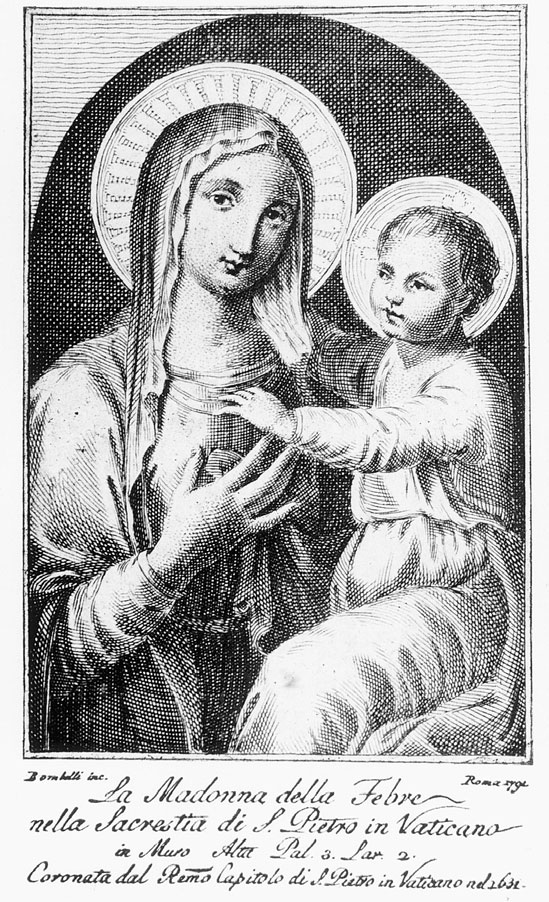Malaria and Rome: A History of Malaria in Ancient Italy (11 page)
Read Malaria and Rome: A History of Malaria in Ancient Italy Online
Authors: Robert Sallares
Tags: #ISBN-13: 9780199248506, #Oxford University Press, #USA, #History

(2000) described the latest, PCR-based techniques for mosquito identification; Russell (1943: 56–61).

46
Ecology of malaria
4. Fontana di Trevi, Rome’s most famous fountain, was completed in its modern form in 1762 by Niccolo Salvi. According to a late-eighteenth century author, the water from the Trevi fountain was excellent for breeding mosquitoes.
noxiis paludum effluviis eorumque remediis
, published in 1717 and based on research in the Roman Campagna, as a possible alternative to the prevailing miasmatic theory that malaria was caused by bad air arising from marshes. Lancisi attempted to observe the life cycle of mosquitoes in an experimental fashion. He correctly noticed that they reproduce very quickly and attain very high population densities in wetland environments, and considered the comments of classical authors on mosquitoes.⁴ Mosquitoes could equally well reproduce very fast inside a building in the city of Rome in a glass of water from the famous Trevi fountain, as the anonymous author of a late eighteenth century discourse on
mal’aria
observed.⁵ However, the miasmatic theory of ‘bad air’ prevailed until Laveran’s discoveries in 1880.⁶
⁴ Lancisi (1717: 56–60); Pietro Paolo da Sangallo (1679) had already considered the life cycle of mosquitoes.
⁵ Anon. (1793: 61):
due giorni bastano nei tempi di gran caldo, perchè in Roma la vantata acqua di Trevi medesima conservata dentro un bicchiere di vetro pulitissimo in una camera custodita produca i vermi, dai quali poco dopo escono le zanzare
.
⁶ Puccinotti (1826) attempted to modify the miasmatic theory by arguing that intermittent fevers were caused by
miasma palustre
in association with
squilibrii periodici di temperatura
.

Ecology of malaria
47
5.
Artemisia absinthium
, Roman wormwood, a plant lethal to mosquitoes.
In antiquity, mosquitoes were certainly regarded as troublesome pests. To try to keep them away a series of measures were employed. In many ways these presage some of the techniques (e.g. the spraying of DDT as a long-lasting residual insecticide on the interior walls of dwellings) employed in the eradication campaigns of the World Health Organization in the 1950s and 1960s. Several different plants were recommended as herbal fumigants, or for smearing on the skin as insect repellents.⁷ Modern research has ⁷ Beavis (1988: 229–38), on references to mosquitoes in ancient authors, cited Pliny
NH
20.71.184 (Roman coriander as a fumigant kills
culices
), 22.74.157 (smoke of burnt wild lupins 48
Ecology of malaria
shown that some of these plants do indeed have the desired properties. A good example is Roman wormwood (
Artemisia absinthium
) and related
Artemisia
species, whose properties are described extensively by Pliny the Elder and other ancient authors. Pliny states that both the smoke of burnt wormwood and rubbing the body with absinth extracts in oil deter mosquitoes (
culices
). Angelo Celli mentioned experiments which found that Roman wormwood incapacitated mosquitoes in a closed chamber within six hours and killed them within twenty-four hours.⁸ Extracts from the related species Artemisia annua
were used in China in traditional herbal remedies against malaria itself. Derivatives of the drug artemisinin (
qinghaosu
) obtained from this plant are now being investigated and may become a major weapon against strains of
P. falciparum
which have become resistant to other drugs, although developing resistance to artemisinin is already being reported in scientific literature. However, no such drugs were available in Europe until quinine was brought from South America in the bark of the cinchona tree after Columbus.⁹ Besides Roman wormwood, the use of mosquito nets is also mentioned in classical sources.¹⁰ Thus some of the anti-mosquito measures described in ancient sources might in fact have had some degree of efficacy,
if
they had been applied on a sufficiently regular basis.
kills
culices
), 23.61.114 (smoke of rind of wild pomegranates kills
culices
), and 27.28.52, Dioscorides,
MM
3.23.4, and Galen 11.798–807K on wormwood. Note also the long chapter in the
Geoponica
13.11, ed. Beckh (1895): per≥ kwn*pwn. Beavis expressed the view that no one in antiquity was aware of the connection between mosquitoes and malaria.
⁸ Lodi (1986: 341–2) described the cultivation of
Artemisia absinthium
in Italy. It also grows wild on wasteland and roadsides in Lazio. Theophrastus,
HP
7.9.5 described the stalks and leaves of åy≤nqion as good to eat, albeit bitter. However, it is now known that prolonged ingestion causes hallucinations, tremors, and other symptoms of toxic effects on the central nervous system (Leporatti
et al.
(1996: 517) ); Chiej (1984: no. 41) for the use of the related species
Artemisia abrotanum
as an insect repellent when rubbed on skin; Celli (1900: 143).
Theophrastus,
HP
9.15.1 described Latium and Tuscany as lands rich in medicinal plants.
Galen, 14.30–31K also noted that there were many medicinal plants growing near Rome, but said that many of the inhabitants of Rome did not know anything about them.
⁹
Qinghaosu
(artemisinin) has been used in China in connection with fevers since at least
340 (Dobson (1998) ); P. F. Russell (1955: 5, 78–9). Hirsch (1883: 209) noted that there was intense malaria in tropical and subtropical parts of China in the nineteenth century, including Hong Kong, Canton, and Macao. Malagón
et al
. (1997) suggested that other
Artemisia species in other parts of the world might also contain antimalarial drugs, cf. Tan
et al
(1998); Reed
et al
. (2000) on drug resistance.
¹⁰ Herodotus 2.95.2 (with the comments of Jöchle (1999: 504)), Varro,
RR
2.10.8, Horace, Epodes
9.16, Propertius 3.11.45, and
Greek Anthology
9.764–6, ed. Paton (1917–18), on mosquito nets (Latin
conopia
).
Ecology of malaria
49
However, the fact remains that there is no evidence that the connection between mosquito bites and malaria infection was understood in classical antiquity. In this respect the ancient Greeks and Romans probably lagged far behind their contemporaries in other parts of the world, despite all the achievements of ancient Greek science. In ancient China a document written by Zuo Qiuming and dating to the Spring and Autumn period (770–476 ) records that a minister contracted malaria following an insect bite. Two other Chinese documents, dating to the Warring States period (476–221 ), state that malaria was caused by mosquito bites and often appeared in late summer or early autumn.¹¹ Similarly the connection between rats and bubonic plague was observed in China long before it was noticed in Europe. There are ancient Sanskrit texts from India which may also associate malaria with mosquito bites; however, these texts seem to be difficult to interpret and impossible to date.¹² Grmek convincingly argued that the concept of contagion or infection was rejected by ancient Greek and Roman medical writers because of its popular association with magic. Such associations were incompatible with the idea of a medicine based on rational thought, as the Hippocratic tradition required. Consequently there was no room in Hippocratic medicine for mosquito bites as a cause of ‘fever’ (puretÎß), which was instead attributed to an imbalance of the humours, especially by Galen. Pellegrin pointed out that nothing is known of
popular thought in classical antiquity.¹³ Peasants might have had different ideas from the élite. It is interesting to bear in mind that Celli recorded that a connection between malaria and mosquitoes was frequently noticed by peasants in the Roman Campagna in the last century, at about the time when the modern scientific understanding of malaria was just commencing. Mario Coluzzi pointed out to the author the importance in the history of malariology of the Italian doctor Guiseppe Mendini, who in the original Italian version of his hygienic guide to Rome, published in 1896, worked out purely through logical arguments that malaria must be transmitted by mosquitoes, before Ronald Ross and Battista Grassi had ¹¹ Dong
et al
. (1996: 95–6).
¹² P. F. Russell (1955: 37–9) quotes the original Sanskrit; Futcher (1936: 541–2); Zysk (1985: 34–44); Raina (1991: 1–4); Zurbrigg (1994).
¹³ Grmek (1984), Nutton (1983), (1998), and (2000
a
), and Leven (1993) on contagion; Pellegrin (1988).
50
Ecology of malaria
performed the laboratory experiments which proved it, in birds and in humans respectively.¹⁴ However, as far as antiquity is concerned, it is striking that even the pseudo-Aristotelian
Problems
, a very interesting work of unknown authorship, described ‘fever’
(puretÎß) as not infectious, even though the author(s) of this work took an interest in contagion that was uncommon in ancient medicine, describing fq≤siß (tuberculosis) and øfqalm≤a (trachoma?) as infectious.¹⁵ Cicero, following the view expressed centuries earlier in one of the works in the Hippocratic corpus, refused to accept that intermittent fevers were of divine origin just because of their periodicity.¹⁶ Nevertheless it is clear that some people did consider intermittent fevers to be of divine or rather demonic origin, since there was a temple of
Dea Febris
on the Palatine hill, reputedly the site of the original settlement of Rome by Romulus. This might be significant with regard to the question of the antiquity of the cult.¹⁷
There were also temples dedicated to this deity in at least two other sites in the city of Rome, according to Valerius Maximus: When they worship other deities, they expect to receive a benefit. However Fever is worshipped, so that she will cause less harm, in temples one of which is situated on the Palatine hill, a second in the vicinity of the monuments of Marius, and a third in the highest part of the Vicus Longus, and remedies which have been applied to the bodies of ill people are brought there.¹⁸
¹⁴ Celli (1900: 90), cf. Corti (1984: 660–1) on the various views about the aetiology of malaria held by early modern Italian peasants. Iliffe (1995: 58, 113) noted that some African peoples also associated malaria with mosquitoes.
¹⁵ [Aristotle]
Problems
7.8.887a.
¹⁶ Hippocrates,
On the sacred disease
, ed. Littré (1839–61) vi. 354–5: oÈ pureto≥ oÈ åmfhmerino≥ ka≥ oÈ trita∏oi ka≥ oÈ tetarta∏oi oÛd†n ¬ssÎn moi dokvousin Èero≥ e”nai ka≥ ËpÏ qeoı g≤nesqai ta»thß t[ß no»sou [sc. epilepsy], —n oÛ qaumas≤wß πcwsi (Quotidian, tertian, and quartan fevers seem to me to be no less sacred and sent by god than this disease [sc. epilepsy], but no one wonders at them.); Cicero,
de natura deorum
3.24:
si omnes motus omniaque quae certis temporibus ordinem suum conservant divina dicimus, ne tertianas quoque febres et quartanas divinas esse dicendum sit, quarum reversione et motu quid potest esse constantius
? (If we say that all movements and all phenomena that maintain their own order at set periodic intervals are divine, must we not declare that tertian and quartan fevers are also divine, for what is more regular than their recurrent cycle?) and 3.63:
Febris enim fanum in Palatio
(a shrine of Fever on the Palatine); Pliny, NH
2.5.16.
¹⁷ Lactantius,
Inst. Div.
1.20.17, ed. Monat, in
Sources Chrétiennes
, 326 (1986), M. Minucius Felix,
Octavius
25.8, and Seneca,
Apocolocyntosis Divi Claudii
6 also mention
Febris
as a divinity.
Dumézil (1996: 230 and n. 40) regarded
Febris
as a demon, but noted that little is known about Roman demonology.
¹⁸ Valerius Maximus,
factorum et dictorum memorabilium libri
2.5.6, ed. Combès (1995):
Et ceteros quidem ad benefaciendum venerabantur. Febrem autem ad minus nocendum templis colebant, quorum [
cont. on p. 52
]
